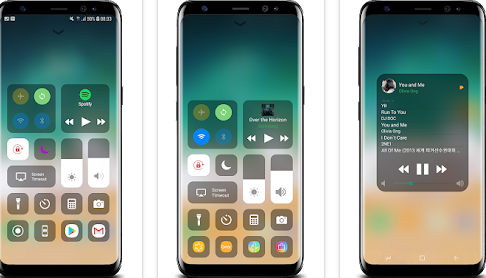The Control Center is a crucial feature found in both iOS 15 and Android operating systems that provides users with quick access to various settings and functions of their devices. In this article, we will explore the Control Center in both platforms, highlighting their features, customization options, and overall user experience.This App Has 5CR+ Downloads and Has An Overall Rating Of 4.5/5 In The Google Play Store.
Starting with iOS 15, the Control Center has undergone several enhancements to improve accessibility and convenience. It is accessible by swiping down from the top right corner of the screen. The iOS 15 Control Center offers a range of controls and shortcuts, allowing users to easily manage settings and perform common actions.
In iOS 15, the Control Center can be customized to include preferred controls, making it more personalized and tailored to individual needs. Users can add, remove, or rearrange controls according to their preferences, ensuring easy access to the features they use most frequently. Furthermore, the Control Center in iOS 15 introduces a new “Control Center for Home Screen” feature, which enables users to place selected controls directly on the home screen for even quicker access.

The Control Center in iOS 15 also incorporates additional features such as widgets, media controls, and connectivity options. Users can interact with widgets, providing them with glanceable information or quick actions. The media controls allow for seamless playback management of audio or video content from various apps. Furthermore, the Control Center provides toggles for Wi-Fi, Bluetooth, AirDrop, Do Not Disturb, and more, ensuring users can easily adjust their device’s connectivity settings on the fly.
Turning our attention to Android, the Control Center experience in the latest version of the operating system (at the time of writing) showcases a similar focus on simplicity and accessibility. In Android, the Control Center can be accessed by swiping down from the top of the screen. It provides users with quick access to commonly used settings and functions.
Like iOS, Android also offers customization options for the Control Center, allowing users to tailor it to their liking. Users can choose which toggles and shortcuts are visible, add or remove controls, and even rearrange their order. This customization ensures that users have a personalized Control Center that aligns with their usage patterns and preferences.
The Control Center in Android also provides various controls and shortcuts. Users can toggle Wi-Fi, Bluetooth, airplane mode, and adjust brightness directly from the Control Center. Additionally, Android’s Control Center offers quick access to settings such as flashlight, screen rotation, and battery saver mode.
While both iOS 15 and Android offer similar functionality, there are subtle differences in the user interface and design of their Control Centers. iOS 15 maintains a clean, streamlined appearance, with rounded buttons and icons, while Android often adopts a more minimalist design with simpler icons and a flatter aesthetic. These differences are largely a matter of personal preference and the overall design language of each operating system.
In conclusion, the Control Center in both iOS 15 and Android operating systems serves as a hub for quick access to essential device settings and functions. It allows users to conveniently manage their device’s connectivity, media playback, and various other features. With customization options available in both platforms, users can tailor the Control Center to their liking, ensuring an optimized user experience. Whether you prefer the refined aesthetics of iOS 15 or the minimalist approach of Android, the Control Center remains an invaluable tool for efficient device management.